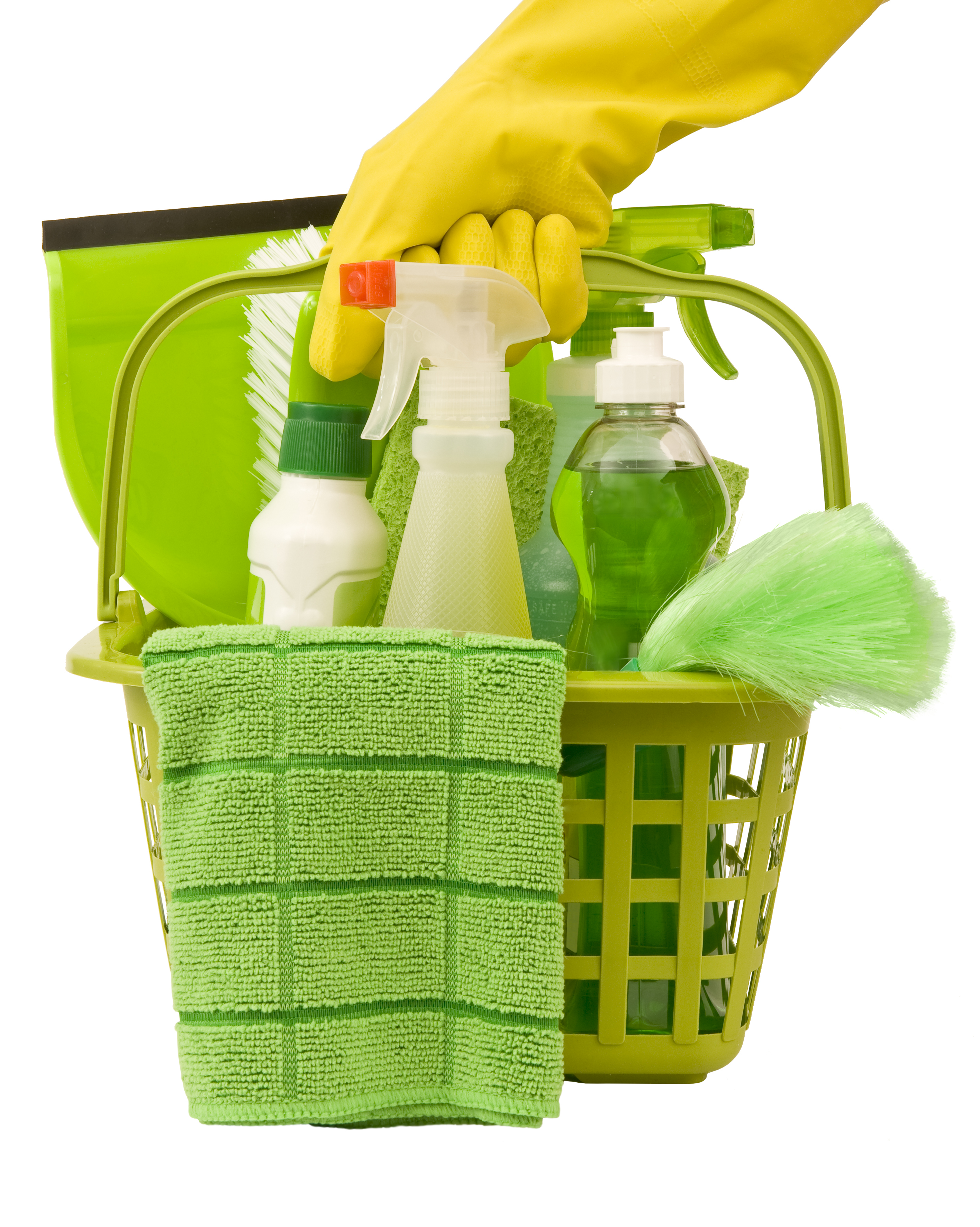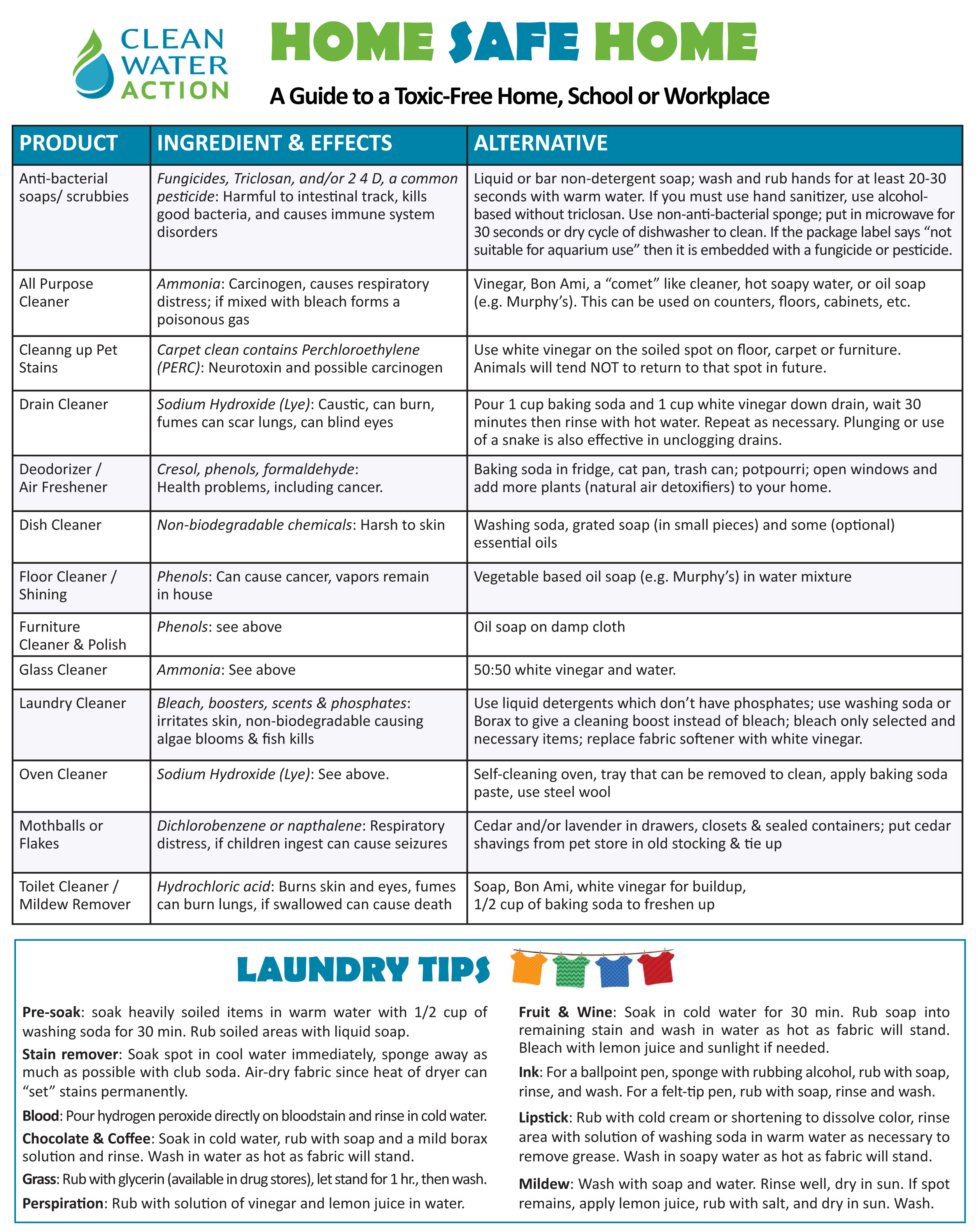
Green cleaning means using less toxic cleaning products that are safer for people, animals, and the environment in homes, schools, and workplaces. Green cleaning practices can provide improved indoor air quality, reduce health risk from exposure, and protect the environment, while maintaining a healthy level of cleanliness and disinfection.
Going green means that it must be accessible to all including corner store shoppers. To that end, we promote and advocate for solutions that are readily available, affordable (cost neutral or cheaper) and effective. See chart on reverse side for Home SAFE Home cleaning solutions. Download our ![]() Green Cleaning Guide 2016.pdf
Green Cleaning Guide 2016.pdf
Why Go Green?
Many of the cleaning products we use every day can be harmful to people, animals and the environment in the manufacturing process and disposal. Chemicals in cleaning products can cause skin, respiratory and allergy distress, cancer, and reproductive harm. Even anti-bacterial soaps, sponges and scrubbies are harmful. They kill bacteria essential to intestinal tract, hinder production of vitamins that protect your mouth and skin, and inhibit immune system development.
What to Look For
- Non-toxic
- Biodegradable
- Phosphate Free
- Recycled content containers
- Bulk packaging
- Natural fragrances
- Contains no dyes, chlorine, or hypochlorite
- Full disclosure or labeling of “active” & “inert” ingredients
Go Green at School!
Cleaning products are especially dangerous around children and custodial staff who use them every day at school. Currently, all of NJ’s state properties and authorities are required to purchase and utilize green cleaning products (Executive Order #76, 2006). However, if you want to go green in schools and other public facilities, you must take your own initiative.
Green Cleaning Guide
Healthy Tips for Homes, Schools and Workplaces

Resources